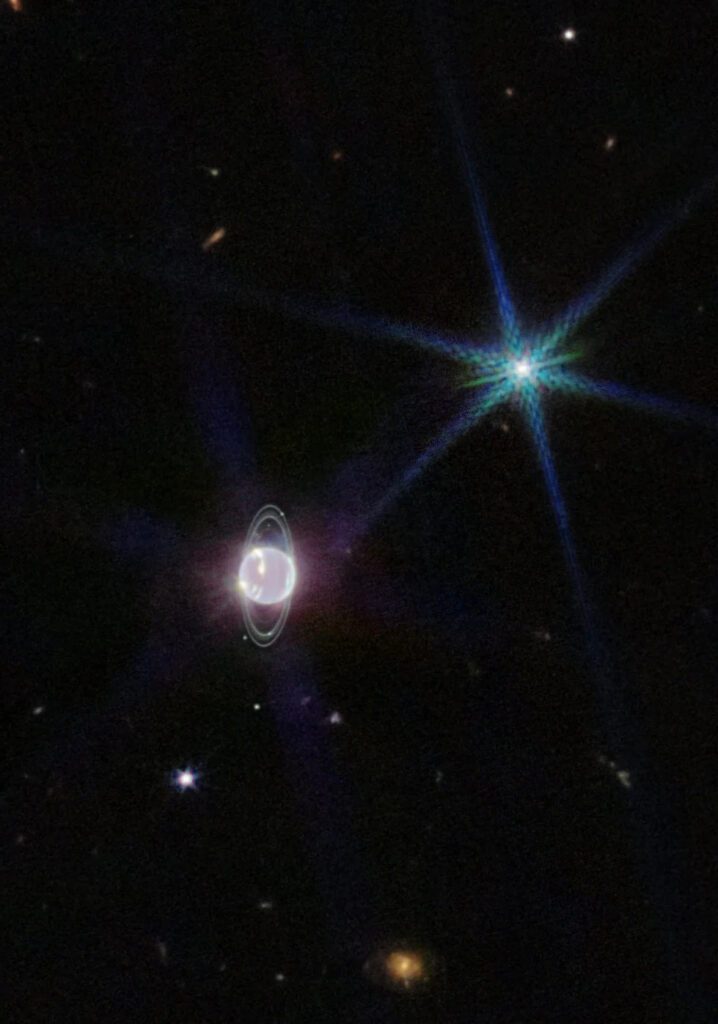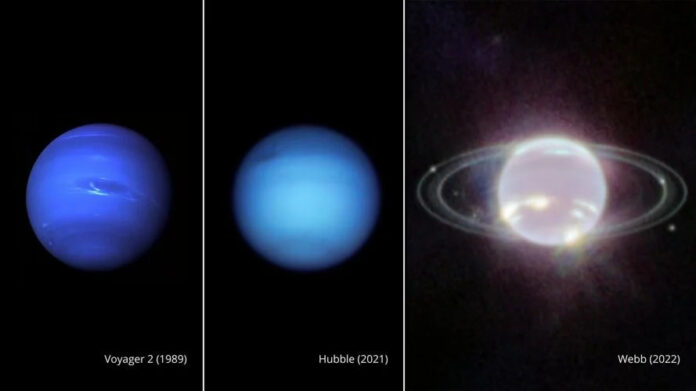Neptune and its rings haven’t been this beautiful in decades.
NASA released new images of our solar system’s outermost planet taken by the James Webb Space Telescope on Wednesday. The images taken in July show not only Neptune’s thin rings, but also its faint dust bands, which have never been seen in infrared before, as well as seven of its 14 known moons.
Webb captured Jupiter at its best in a new series of images released last month.
The $10 billion Webb, which was launched less than a year ago, spends most of its time peering much deeper into the universe. Astronomers hope to see into the early universe, when the first stars and galaxies formed.
During a 1989 flyby, NASA’s Voyager 2 was the first spacecraft to see Neptune in all its gaseous glory. There have been no previous spacecraft visits to the icy, blue planet. So it’s been three decades since astronomers last saw these rings with such detail and clarity, according to Heidi Hammel, a planetary astronomer working with Webb at the Space Science Institute. When Hammel saw the rings, she burst into tears, yelling and making “my kids, my mom, even my cats look.”

Webb is the largest and most powerful telescope in the world, operating 1 million miles (1.6 million kilometres) from Earth. It was launched into space last December.
Except for one item, NASA says the observatory is in good shape.
NASA reported this week that a mechanism on one of Webb’s instruments showed signs of increased friction in one of four observing modes late last month. Observations in this particular observing track are on hold while a review board decides on a course of action.

